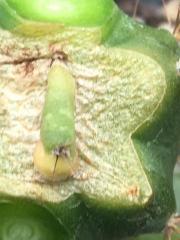-
Content count
1,941 -
Joined
-
Last visited
-
Days Won
8
About M S Smith
-
Rank
Cactiphile Extraordinaire
Contact Methods
-
Website URL
http://www.cactus-mall.com/mss/index.html/
-
ICQ
0
Profile Information
-
Gender
Male
-
Interests
Take a wild guess.
Previous Fields
-
Climate or location
flickr.com/msscacti
Recent Profile Visitors
3,306 profile views
-
Sorry to say, I must be signing off. With luck it won't be long, but only time will tell. Thanks for allowing me to share and for sharing back. Truly yours, ~Michael~
- 101 replies
-
- 12
-

-
That's really neat! Are they taking the seed just to get the fruit and fruit remnants on the seed or after the seed itself? ~Michael~
-
Stateside here, and nothing to offer you plant-wise, but I have a feeling you'll have me hanging on every word of yours if you post in the spirituality/philosophy forum. Welcome. ~Michael~
-

Anyone growing Trichocereus Peruvianus from Rio Lurin/Lurin Valle?
M S Smith replied to Evil Genius's topic in Cacti & Succulents
That first shot is just the sort of plant I love. Truly beautiful. ~Michael~- 10 replies
-
- trichocereus peruvianus
- trichocereus cuzcoensis
- (and 2 more)
-

The Macrogonus Onus pt. 1 -- 001
M S Smith replied to trucha's question in Cactus & Succulent Identification
I only ask as there seems to be so much human intervention in Trichocereus, particularly in central to northern Peru, going back at least 3,000 years to the Chavin culture if not much further. It just makes me wonder if these early explorers were naming plants simply by differences from others they've seen, and which could have been cloned over centuries, but lack general populations of somewhat homogeneous plants that reproduce amongst themselves and take to the soil naturally. I guess my question is about how one might differenciate a species from a clone in a culture which has for so long interacted with the genus. In looking at some of the plants of southern Bolivia, Chile, and Argentina, there are ranges over which the giant Trichocereus are spread and which somewhat more clearly allows one to consider certain populations species, and subspecies, but when it comes to some of the "species" of Peru, and of which are the focus of our interest, this seems to be lacking in some respects. Is there any sort of listing available which outlines which of these have clear-cut populations of naturally growing homogenous plants that reproduce and grow naturally without hint of human intervention? I would undoubtedly consider T. cuzcoensis and T. peruvianus in this list, and likely T. pachanoi and T. schoenii, but are there self-replicating naturalized "stands" of such "species" as T. tarmaensis, T. pallarensis, T. santaensis, T. tulhuayacensis, and T. puquiensis that mimic how most cactus taxa grow over a certain territory? ~Michael~ -

The Macrogonus Onus pt. 1 -- 001
M S Smith replied to trucha's question in Cactus & Succulent Identification
Thanks! You answered some of my follow-ups without me having to ask. One more thing though, do you agree with E.F. Anderson's view that to be regarded as a species there must be an edimic/indigenous population of relatively homogeneous plants? (I'm of course not trying to preclude the possibility of plants that might have been introduced to a new location in the past by whatever means and evolved over time into a new species and developed a naturalized population.) Does this make sense? ~Michael~ -
Looks like Euphorbia trigona, but without the little leaflets. ~Michael~
-

Zelly's trich crosses, got pics? post here please
M S Smith replied to mushroomman's topic in Cacti & Succulents
Nice, a couple four ribbed seedlings in there. Wish i could keep up with some of you, but seriously little space or time. ~Michael~ -

The Macrogonus Onus pt. 1 -- 001
M S Smith replied to trucha's question in Cactus & Succulent Identification
kt, I've thoroughly enjoyed the history and am very much looking forward to comments addressing the "quite recognizable and distict" differences between T. peruvianus and T. macrogonus, differences which you appear to indicate don't necessarily mean they are different species. I can easily gather that the name T. macrogonus might have precedence over the name T. peruvianus, but if these two can be recognized as distict from each other, and therefore be worthy of a difference in name, even if that be at the subspecies or variation level, then what of the plethora of others that may have comparable disimilarities but are clearly in the same species? Are we then to create a plethora of subspecies or variations? ~Michael~ -

Not sure what this is. Young pasacana?
M S Smith replied to Psyentist's question in Cactus & Succulent Identification
I'd guess T. candicans or T. pseudocandicans. -
I was just looking to indicate a cross of the two species and really wasn't thinking about which was maternal or paternal. As for the need for a plant to be in the ground to grow true to form, well how might the T. scopulicola photo I posted above not be true to form? I could just as easily say a plant is not true to form if growing outside of the species evolutionary niche. Seriously, could one claim that a T. peruvianus growing in a container in Matucana would not grow to form just like one next to it growing in the ground? ~Michael~
-
Is the skin waxy or a little rough when you run your fingernail down it? Still look somewhat like a T. bridgesii x T. scopulicola to me. ~Michael~
-

WHAT DOES MYSTICISM HAVE TO TEACH US ABOUT CONSCIOUSNESS?
M S Smith replied to DiscoStu's topic in Creativity, Spirituality & Philosophy
I spent a couple years when younger in a very intensive and personal study of mysticism and was surprised by this articles lack of citation of Evelyn Underhill's Mysticism: The Nature and Development of Spiritual Consciousness. This work is a classic and if you have a chance to read it then don't pass it up. While James Frazier in his own classic, The Golden Bough, shows the commonality of myths and rituals throughout the outer world Ms. Underhill does the same, but for the religious life of the inner world. ~Michael~ -
Looks like an odd T. scopulicola x T. bridgesii to me. The epidermis looks matte, i.e., unreflective and slightly rough in texture. Such texture, as well as the folded in areoles seems more like t. scopulicola than anything else to me. Compare to this T. scopulicola I grew from Sacred Succulent seed. ~Michael~
-

Anyone growing Trichocereus Peruvianus from Rio Lurin/Lurin Valle?
M S Smith replied to Evil Genius's topic in Cacti & Succulents
I'd probably just consider it one of many T. pachanoi types that exist in the same region as so many others and wouldn't think that it is somehow distinct. Who knows if it even represents a particularly prominent form, hell, do we even know where specifically on the Rio Lurin it comes from or whether or not it's just somebodies cultivated plant grown besides their home? Wiki states that "The Lurín River is a 108.57 kilometres (67.46 mi) long watercourse located in the Lima Region"... and "crosses the provinces Huarochiri and Lima in the Lima region before emptying into the Pacific Ocean" Seems like it would be best to say it's just a clone of unknown provenance. That it, the photo above of Trout's, came from Knize doesn't help matters, in that case it could have come from anywhere. Not to say one shouldn't find the plant pretty and therefore desirable of course, or that it wouldn't be a nice "tag" addition to the good ol' collection. ~Michael~- 10 replies
-
- 1
-

-
- trichocereus peruvianus
- trichocereus cuzcoensis
- (and 2 more)











